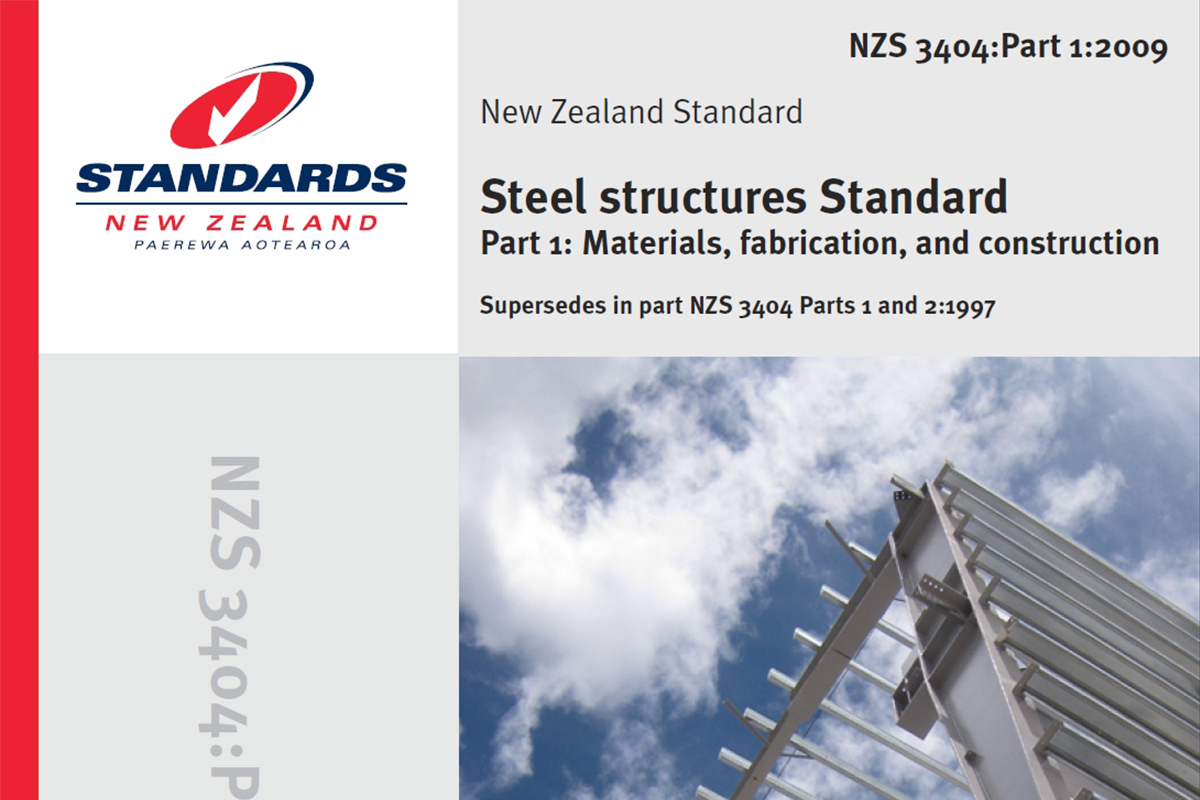Working with the Building System Performance (BSP) branch of MBIE, the New Zealand Standards Approval Board has revoked NZS 3404.1:2009.
This development will eliminate the conflict that has existed with other standards and provide a clear signal about which version of NZS 3404.1 should be used to support regulatory compliance.
It’s important that designers, building officials and fabricators make themselves aware of this – as it’ll affect your day to day work. Particularly in demonstrating how steel structures comply with the Building Code.
Breaking down NZS 3404.1:2009
NZS 3404.1: 2009 provided rules for materials, fabrication and construction and was the first of seven parts that were intended to replace NZS 3404.1: 1997.
Unfortunately, work on Parts 2 to 7 was never completed. Also, NZS 3404.1: 2009 isn’t cited in the New Zealand Building Code system. The current primary reference document in B1/VM1 for steel design is NZS 3404.1: 1997. Because of this, use of a method within NZS 3404.1: 2009 is deemed an ‘alternative solution.’
Other standards development activities have overtaken the original plans. Where, AS/NZS 5131 (structural steelwork – fabrication and erection) and SNZ TS 3404 (durability requirements for steel structures and components) now replace the majority of content developed and published in NZS 3404.1:2009. AS/NZS 5131 is now cited in B1/VM1, and consultation is underway to have both AS/NZS 2327 and NZS TS 3404 cited through an amendment to B1/VM1 and B2/AS1.
In some places, NZS 3404.1: 2009 is in conflict with AS/NZS 5131, AS/NZS 2327 and NZS TS 3404. And, contents in NZS 3404.1: 2009 have sometimes mistakenly been considered to be ‘acceptable solutions.’
What does this mean for you?
At HERA we believe that the co-existence of NZS 3404.1: 2009 and NZS 3404.1: 1997 has created confusion to users and occasionally led to unintended outcomes. We felt that a clear signal was needed around which version of NZS 3404.1 should be used to support regulatory compliance.
To fix this, we worked closely with the BSP Building System Performance branch of MBIE. Putting forward a proposal to Standards New Zealand for NZS 3404.1: 2009 to be withdrawn – personally presenting this to their Approval Board on 5 September 2018.
As a result, its now been decided to revoke NZS 3404.1:2009.
Key information you need to know!
- NZS 3404.1: 2009 has now been withdrawn, which removes any rules that are in conflict with AS/NZS 5131. A consultation is currently underway to have AS/NZS 2327 and NZS TS 3404 cited in B1/VM1 and B2/AS1. This will be deemed as acceptable solutions.
- NZS 3404.1: 2009 isn’t cited in the New Zealand Building Code system. The current primary reference document in B1/VM1 for steel design is NZS 3404.1: 1997. This means the use of a method within NZS 3404.1: 2009 would be deemed an alternative solution.
- A withdrawn standard can still be purchased for reference. But, the ‘withdrawn’ designation is a clear signal about which version should be used to support regulatory compliance. In the absence of any other method, parts of NZS 3404.1:2009 could be used, and would be deemed as an alternative solution (i.e. the status quo is maintained).
- One of the areas that might be affected by the withdrawal of NZS 3404.1: 2009 are the rules on brittle fracture. Over the last 18 months we’ve been working on a new design procedure for brittle fracture design aligned to international best practice. It’s currently under an international peer-review but this procedure has already successfully been used on a project in the Antarctic.
What now?
Moving forward this work will remove conflict with the latest national standards, including AS/NZS 5131 (which is the basis for the SFC scheme), and make it clearer for our industry on what standards are required for regulatory compliance. We recommend everyone makes themselves familiar with this, as it will affect how you carry out your day to day work in steel construction and fabrication.
We also plan to publish our brittle fracture design procedure in the next six months. However, we’re happy to be approached to provide further assistance prior to this. To do so, please contact our General Manager Structural Systems Dr Stephen Hicks.
Update shared by our General Manager Structural Systems Dr Stephen Hicks
